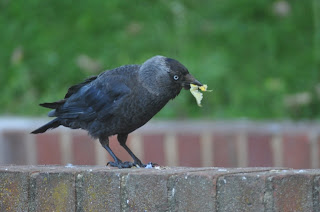 |
| Leopard Snake (Zamenis situla) |
The leopard snake is a beautiful indigenous reptile that lives in vegetated areas and sometimes visits gardens.
Despite being active during the day, it is rarely seen although it may be caught hunting at dusk.
In Maltese, the leopard snake is known as lifgħa. It can grow up to one metre in length and hunts small animals such as young birds, reptiles, frogs, mice and even small snakes. But it is not poisonous.
In the Acts of the Apostles, it is written that Paul of Tarsus was shipwrecked in what we believe are the Maltese islands in AD 60 and that while he was warming himself near a fire he was bitten by a viper but he did not die. This gave rise to the belief that, as a result of this, all snakes in Malta lost their poison.
Three other snakes can be found in our countryside.
The most common is the black whip snake known in Maltese as serp iswed. Any snake encounter in the Maltese Islands is likely to be with this species that is active during the day. It can grow up to two metres in length. The black whip snake is also not poisonous. When approached it will move swiftly away but if it is caught or cornered, it will defend itself by trying to bite.
The two other species, the Algerian whip snake (serp aħdar) and the cat snake (teleskopu) are rare and very difficult to find.
The Algerian whip snake is an African species not found in Europe except in Malta. It probably arrived in Malta with merchandise from North Africa. The cat snake spends the day hiding under stones and becomes active at dusk and dawn.
This species is poisonous but it is not dangerous. The fangs through which it injects the poison are placed at the mouth and can reach only creatures that are small enough to fit in it. Its poison is weak and has an effect only on small animals.
This article was published in The Times on 28.11.12























